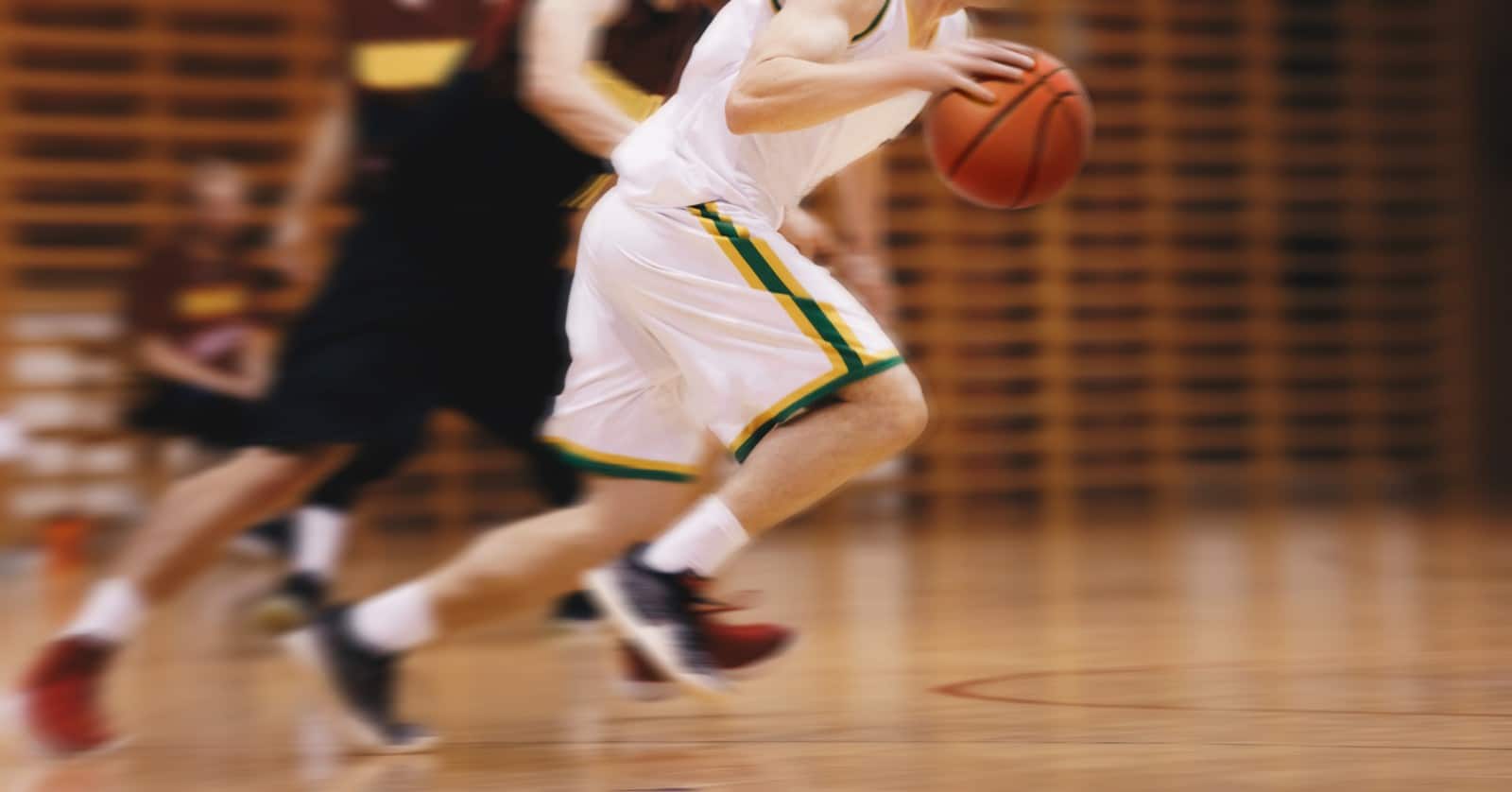Youth sports are definitely fun, and they can also be demanding on a young athlete’s body. Basketball is a great example of this. A high performing basketball player must have strength, speed, agility, verticality, endurance, quick reactionary time and excellent eye-hand coordination. Athletes generally spend a majority of their practice (both off season and in season) working on these aspects of their sport and can tend to neglect understanding how their body as a whole chain is working for or against them.
Let’s take a moment to imagine your entire body when you are in a loading position just before your feet leave the ground and you are about to take a jump shot. Where are your feet and your ankles? Your knees? Your shoulders and neck? How do those positions change once you are in the air? Now consider what happens when you land from that jump in each of those joints and muscles. And when you land from that jump, now you have to decelerate and control your body from hitting the ground. If you have ever experienced an ankle sprain, a knee sprain or maybe even an ACL tear, you probably know that controlling all of these motions is critical to staying healthy and performing on the court.
Consider a few of these tips when training your body to successfully perform on the court:
1. Train like you play. If you ever have to plant your foot hard, cut in the opposite direction and change speed at the same time (and you do!) – Oh, and it is the last 3 minutes of the game so your body is exhausted – you better train yourself to be able to execute that move safely and successfully. That requires taking your body through those same cuts and ones just like them over and over again, even while your body is tired.
2. Make it three-dimensional. Basketball is a 3D sport and it demands our bodies to move front/back, side-to-side, and in rotational movements. And this 3D movement occurs at every joint and part of the body. We see many players in the gym training their bodies to move front to back (squats, sit-ups, bench press, running), and neglect the other movements. This makes it hard to execute when the time comes. Consider adding movements in all directions that look and feel like your movements on the court.
3. It’s not just your legs. Did you know that your core muscles are not just your abdominals? Your core is comprised of abdominal, back, hip and pelvic floor muscles, and is responsible for stabilizing and transferring force through your body during athletic movement. And guess what, your core is also three-dimensional and has a big job to keep the body connected, powerful and injury-free. So, train your core and do so in all three planes of motion!
ACL tears have been more prevalent as athletes have become single sport centered throughout the years. Did you know that one could argue that an ACL tear can be caused by poor ankle and foot control or lack of hip flexibility and strength? You can learn how to decrease the chance of an ACL tear by demanding three-dimensional mobility and stability out of your entire chain and tweaking various aspects of your sport-specific needs such as: speed, environment, momentum, height, and distance. Learning all about you and how you move may help you reduce your risk for traumatic injuries such as an ACL or rotator cuff tear or severe ankle injuries that take you off of the court or potentially could end your season. Don’t let nagging injuries and pain take you out of the game.
At Spooner Physical Therapy, we evaluate your entire body and how it creates movement and responds to movement in a three-dimensional way. Our therapists are trained to evaluate how you move functionally off the table. We rehab you in the movements and positions to return to you to performing on the court and so that your body is most prepared to avoid a basketball injury in the future. We would love to be a part of your team!
Learn more about the ACL Injury Rehabilitation Program at Spooner Physical Therapy. Ready to schedule an appointment? Schedule an appointment or complimentary movement screen with a Spooner physical therapist at one of our locations throughout the valley.

